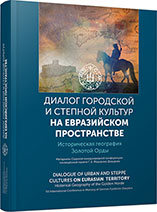Симболон — Чембало — Балаклава: семантика топонимов и особенности топографии средневекового города
Symbolon — Cembalo — Balaklava: Toponymy Semantics and Peculiarities of the Medieval Town Topography
Author(s): Victor L. Mytz
Subject(s): History, Regional Geography, Historical Geography, Middle Ages, Modern Age
Published by: Издательский дом Stratum, Университет «Высшая антропологическая школа»
Keywords: Symbolon; Cembalo; Balaklava; Castron; Chefalo-Vrisi; Repiola; St. Nicholas castle; burgs; castrum; lower town
Summary/Abstract: Modern Balaklava is located on the banks of a well-protected winding bay. The infrastructure of the medieval town formed during the 6th—17th centuries and was historically linked with the Byzantine, Golden Horde, Genoese and Ottoman periods of its existence, changing its name from Symbolon to Cembalo to Balaklava. The paper offers a brief retrospective consideration of the etymology of these toponyms in their historical and cultural context. It is also noted that the topography of the ancient fortress and the town is characterized by an unusually low number of preserved microtoponyms and urbonyms that had formed in conditions of cohabitation of the population speaking three languages: Greek, Tatar and Ligurian.
Book: Диалог городской и степной культур на Евразийском пространстве. Историческая география Золотой Орды
- Page Range: 294-298
- Page Count: 5
- Publication Year: 2016
- Language: Russian
- Content File-PDF

